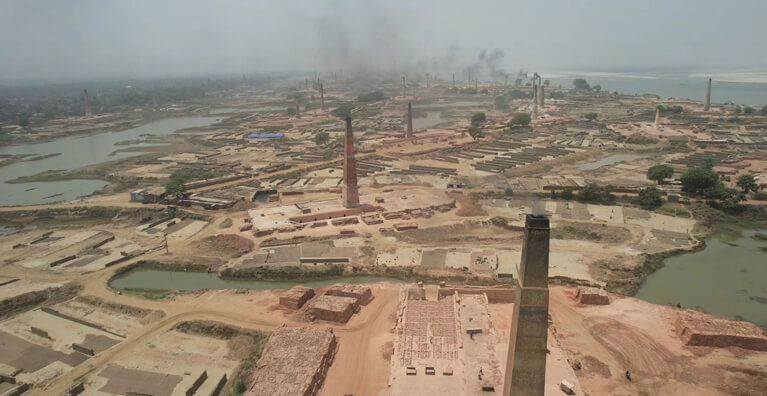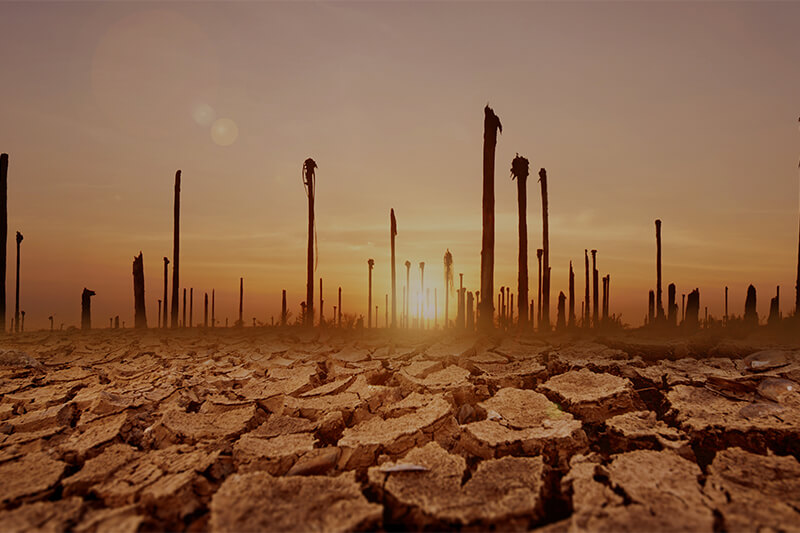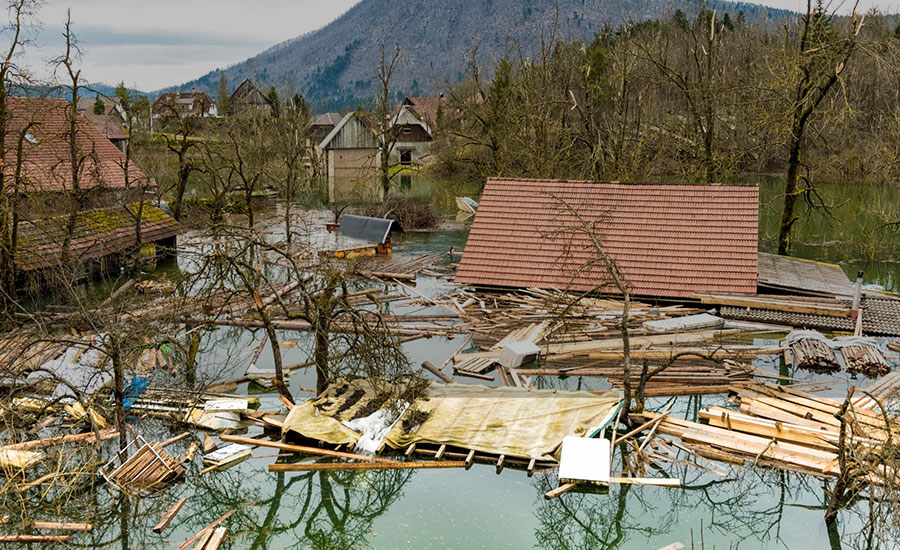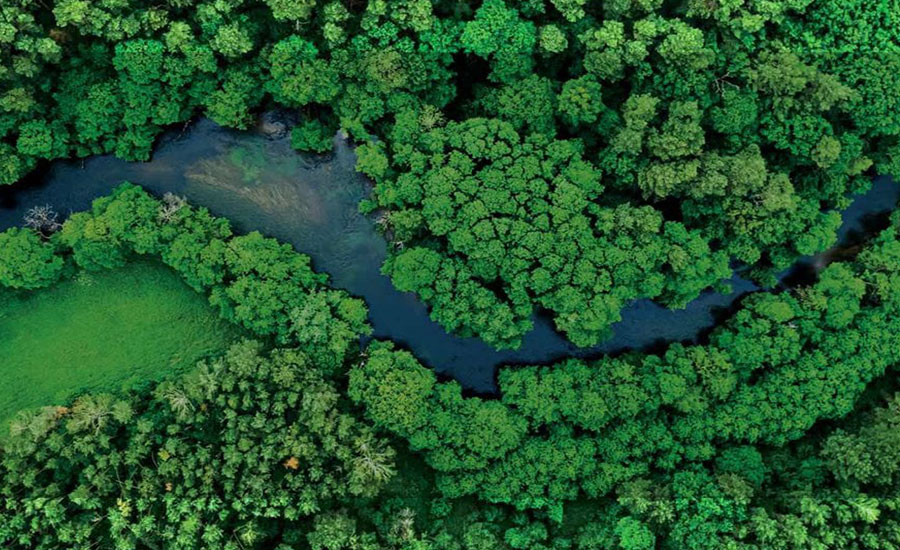The UNGA resolution adds a layer of responsibility for businesses across Asia and the world. It’s through adding this layer that we start talking about a clean and healthy environment, which is now part and parcel of basic human rights–for everyone.
- Gregorio Rafael Bueta, adjunct faculty member, Ateneo de Manila University School of LawIn August 2022, three 600-year-old Buddhist figures gazed out from a rock perch along the Yangtze River in China. Their serene faces belied the troubling omen which they represented. The statues were visible only because the river was at its lowest level in living memory.
The chance of breaching the 1.5 degree barrier by 2026 in probability terms.
An unprecedented heatwave in China, compounded by drought conditions lay behind a dramatic plunge in the Yangtze’s flow. As such, the emergence of the Buddhist statues serve as a portent of the kind of dire challenges which climate change will bring. China is not alone in facing these circumstances. Hulking wrecks once submerged now stick out of the bed of the Danube River. In Nevada, human remains are now emerging in the drying bed of Lake Mead. Exceptional droughts in Europe and North America are also to blame. Ominous discoveries like these are more likely in the years to come as climate change processes take hold and temperatures rise.
Earnest governmental pledges and stirring declarations at international conferences have focused on limiting the average global temperature rise to 1.5 degrees Celsius by 2100. Unfortunately, this already looks out of reach. The UK Meteorological Office says that the chance of global near-surface temperature exceeding 1.5°C above pre-industrial levels at least one year between 2022 and 2026 is about as likely as not (48%).4 Humanity may be entering into the 1.5C warmer world – or at least a glimpse of it – as early as 2026. Countries, and companies, thus need to act to minimise the extent of the disruption and prepare for a more uncertain physical environment.

Recently, there have been important developments addressing environmental issues at the international level. In July 2022, the UN General Assembly (UNGA) passed a resolution nearly unanimously that recognised a clean, healthy and sustainable environment as a universal human right.5 Although the resolution is non-binding, and the meaning of “clean”, “healthy” and “sustainable” lack internationally agreed legal definitions,6 the wide adoption of the resolution by UN Member States will likely mean more focus on state duties to address the human rights impacts of climate change.
Gregorio Rafael Bueta, adjunct faculty member at Ateneo de Manila University School of Law explains that the UNGA resolution “adds a layer of responsibility for businesses across Asia and the world. It’s through adding this layer that we start talking about a clean and healthy environment, which is now part and parcel of basic human rights–for everyone”. Climate change is a major factor that undermines the functioning of clean, healthy, and sustainable environments. By this measure then, the right to a healthy environment includes climate considerations.
Yet, even before the UNGA resolution, international agreements on the environment were adopting human rights language. The overarching declaration of the COP27 climate talks in 2022 states that, when taking action to address climate change, businesses and governments should “respect, promote and consider their respective obligations on human rights, the right to health, the rights of Indigenous Peoples, local communities, migrants, children, persons with disabilities and people in vulnerable situations, and the right to development, as well as gender equality, empowerment of women and intergenerational equity”.7

Accordingly, policy makers and business leaders must consider heightened climate and compliance risks where their decisions and operations exacerbate, or create new, climate vulnerabilities for communities or ecosystems. This goes beyond the traditional fields associated with environmental protection. For companies this will affect any number of choices on where and how they do business. For states, this means reviewing legislation, developing enforcement capacities and ensuring that corporate regulatory policies, and trade and investment policies are fully informed by pre-existing and legally binding commitments to human rights.
Stakeholders in Asia are no exception to these pressures and circumstances.8 Given the size and vulnerabilities of the region, Asian business leaders and policy makers must play a leading role in the battle against climate change.
Globally, countries are falling short in reducing GHG emissions and in efforts to adapt to the changing climate. Insufficient measures and inadequate support to developing nations persist, while climate risks escalate, putting at risk the lives and livelihoods of millions, if not billions. The latest Intergovernmental Panel on Climate Change (IPCC) report warns that physical climate risks – including dangerously high heat and humidity levels, along with rising seas and flooding – will beset the entire continent of Asia.9 The IPCC also states that even if effective actions to limit global temperature increase to 1.5°C were put in place, losses and damages stemming from climate change are not preventable, as there is a “locked-in” level of warming that is already causing unavoidable consequences. With warming temperatures, losses and damages will be increasingly difficult to avoid, and they will be concentrated among the poorest and most vulnerable populations. Currently, losses and damages are not comprehensively addressed by current financial, governance and institutional arrangements.
In Asia, the proportion of global GHG emissions that the region produces are now, for the first time, equal to its percentage share of the world population. Asia’s economic centres can no longer wait for other regions to reduce emissions. They too must now focus on how to prevent, or at least prepare for, climate events which will cause massive damage to Asian infrastructure, supply chains, natural capital and labour capacity, with dire costs to human life and well-being.10
Protect, Respect and Remedy
Based on three pillars of ‘Protect, Respect and Remedy’, the UNGPs help states and businesses prevent, and address, human rights abuses committed in the context of business operations.
To understand the current state of government and corporate efforts to address evolving climate-related challenges in Asia, Economist Impact conducted wide-ranging research, including over 40 in-depth interviews supplemented by extensive desk research. The findings are in this study and the recommendations that follow, align with the UN Guiding Principles (UNGPs), which are considered as one of the world’s most authoritative normative frameworks guiding responsible business practices. Based on three pillars of ‘Protect, Respect and Remedy’, the UNGPs help states and businesses prevent, and address, human rights abuses committed in the context of business operations.
For a brief review of the UNGPs see accompanying box and annex.
Pillar 1: The state’s duty to protect human rights
The first pillar of the UNGPs focuses on the state’s obligation to respect, protect and fulfil human rights and fundamental freedoms. To implement this duty, the guiding principles recommend the setting of clear expectations, such as relevant legal guidelines that must be followed by both domestic and foreign businesses within the state’s jurisdiction. Setting clear expectations ensures predictability for businesses by signalling a consistent message applicable to all enterprises. In the context of the state’s responsibility…
Foundational Principles 4 and 5 state that:

“4. States must protect against human rights abuse within their territory and/or jurisdiction by third parties, including business enterprises. This requires taking appropriate steps to prevent, investigate, punish and redress such abuse through effective policies, legislation, regulations and adjudication.”
“5. States should set out clearly the expectation that all business enterprises domiciled in their territory and/or jurisdiction respect human rights throughout their operations.”
Pillar 2: The corporate responsibility to respect human rights
The second pillar of the UNGPs focuses on the corporate obligation to respect human rights. To carry out this responsibility, business enterprises are required to comply with all applicable local and international laws, but also go further and address any human rights risks or adverse human rights impacts of their operations. The UNGPs provide the necessary context for businesses to understand their responsibilities in taking steps to mitigate air pollution resulting directly from their operations.
Guiding Principle 14 states, “the responsibility to respect human rights requires that business enterprises:
“(a) avoid causing or contributing to adverse human rights impacts through their own activities and address such impacts when they occur;
(b) seek to prevent or mitigate adverse human rights impacts that are directly linked to their operations, products or services by their business relationships, even if they have not contributed to those impacts.”

The UNGPs provide the necessary context for businesses to understand their responsibilities in taking steps to mitigate air pollution resulting directly from their operations.
Pillar 3: Access to remedy
The final UNGP pillar outlines state and corporate responsibilities with regard to ensuring the appropriate legislative, judicial and non-judicial mechanisms are set up to address and remediate grievances.
Guiding Principle 25 states that: “as part of their duty to protect against business-related human rights abuse, states must take appropriate steps to ensure, through judicial, administrative, legislative or other appropriate means, that when such abuses occur within their territory and/or jurisdiction those affected have access to effective remedy.”
However, the onus does not rest solely with the state.
Guiding Principle 29 provides that: “to make it possible for grievances to be addressed early and remediated directly, business enterprises should establish or participate in effective operational-level grievance mechanisms for individuals and communities who may be adversely impacted.”
Download the report
Access the footnote sources, appendix information and charts by downloading the full PDF report
Written by










